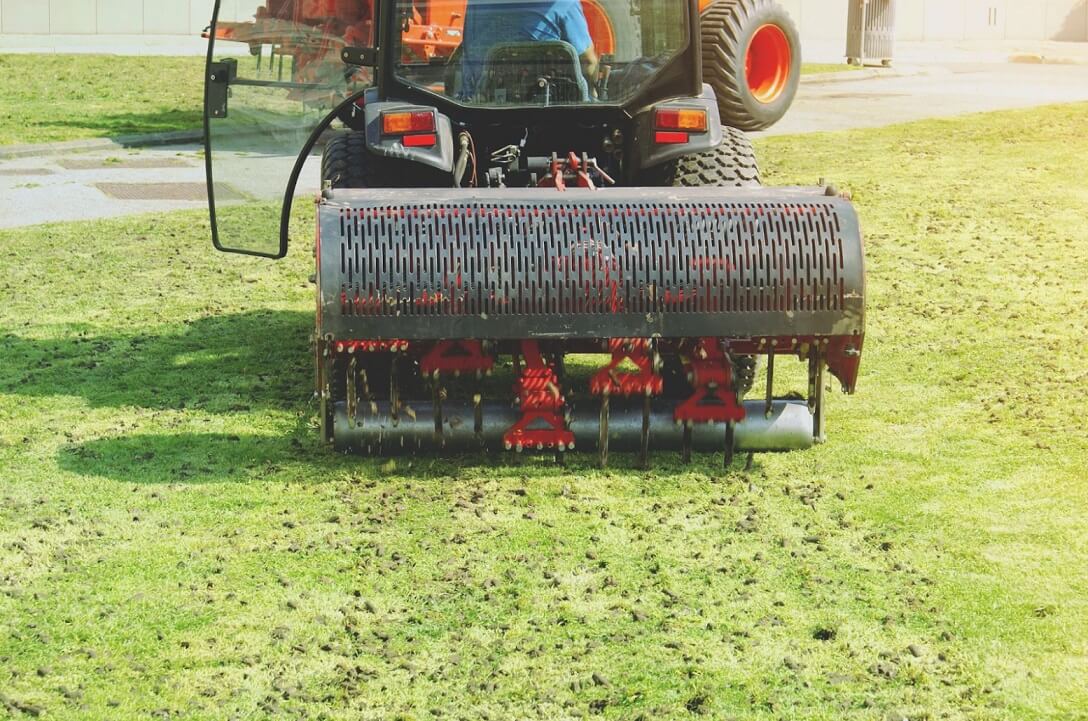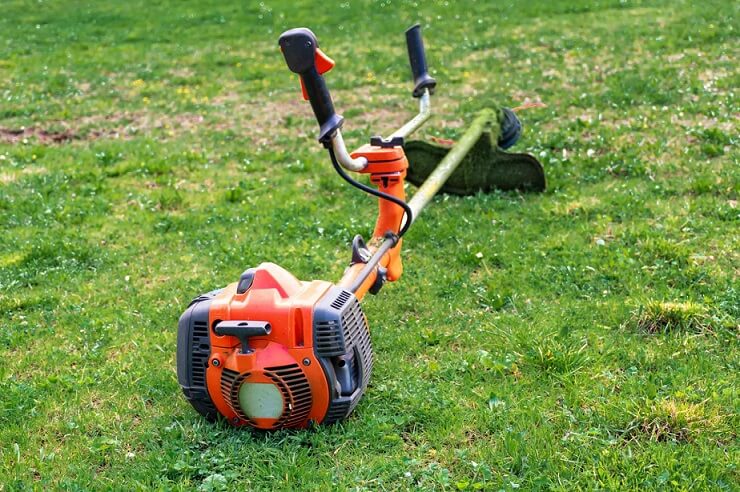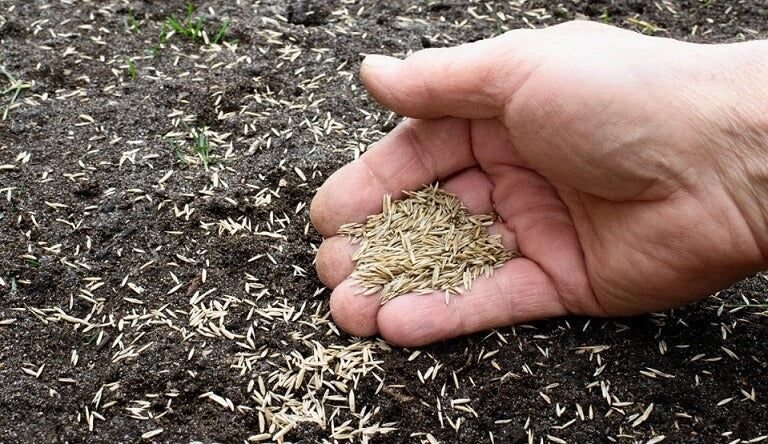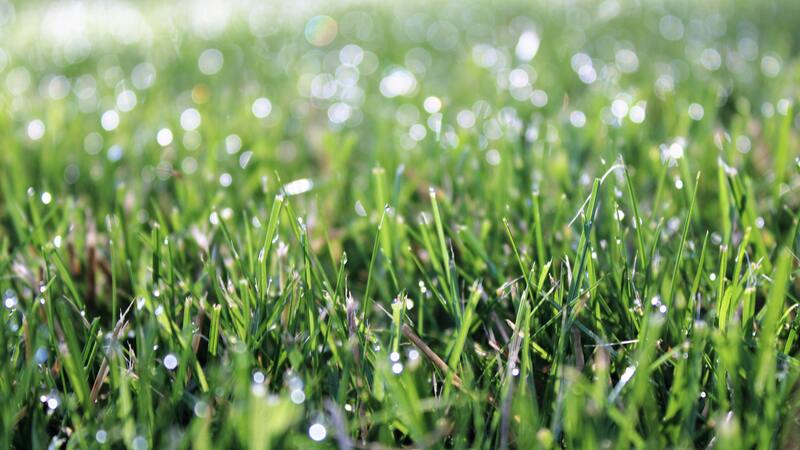As winter approaches, many homeowners begin to wonder about the best practices for maintaining their lawns. One common question that arises is whether to cut the grass short before the cold weather sets in.
Well, the answer may vary due to the grass type, local climate, and overall lawn health. But the general rule is that you never cut your lawn too short nor too long.
So, how short is too short? What is the ideal height you should leave your grass for winter? Let's dive into one of the intriguing topics regarding winter lawn care.
Why Does the Grass Height Matter So Much?
Let's answer this question first. You realize how bad the results could be only after you cut it too short or too long. Here are some consequences if you don't cut according to the best height to cut grass.
Consequences of Cutting Grass Too Short
Cutting grass too short means removing a significant portion of the leaf blades, which will stress the grass since there's less part remaining for photosynthesis to create energy for the plant.
Consequently, the grass will be weakened. A weakened plant has difficulty absorbing nutrients, and root growth is stunted.
Gradually, the grass roots may die and brown patches appear, especially in winter when sunlight is limited and the weather is dry for a considerable period. When brown spots appear, it means the grass has died. And when it happens, the turf will also become weak, making it susceptible to weeds, disease, and pests.

Consequences of Cutting Grass Too Long
Cutting grass too short greatly harms the lawn. Similarly, you should not leave the grass too long for winter.
Long grass blades block sunlight, inhibiting the growth of the grass underneath. And long blades may lead to overlapping, leaving less surface area to photosynthesize for energy production.
On the other hand, long grass tends to attract more insects and small animals, increasing the risks of disease and pests. Also, it's not hard to imagine how messy your lawn will look during winter. Think about it. Leaving the long and dripping grass untended for weeks or even months is horrible.

In a nutshell, grass height is crucial because it directly impacts the plant's ability to perform essential functions like photosynthesis and develop a strong root system, which in turn affects the lawn's overall health, resilience to stress, and ability to resist weeds and pests.
Best Height for Cool-Season Grass Before Winter
Cool-season grasses, such as Kentucky bluegrass and fescue, thrive in the colder months. These grasses should be kept at a moderate height, typically around 2.0 to 2.5 inches.

But don't cut the grass to this height in a single mowing session. In late fall, you may start to lower your mower's blade gradually over several weeks and eventually aim for the final height at the final cut for the season.
Mowing to this height can help resist disease spread by limiting shelter and food sources for pests like voles and certain insects over the winter, but without stressing the grass roots or exposing them to the cold.
If you're clear what type of grass you have, you may slightly adjust its height according to this mowing height chart for different types of cool-season grass:
|
Grass Type |
Ideal Mowing Height |
|
Fine fescue |
1.5 to 3.5 inches |
|
Kentucky bluegrass |
2 to 3.5 inches |
|
Perennial ryegrass |
2 to 3.5 inches |
|
Tall fescue |
2 to 4 inches |
To check if your grass is a cool-season type, observe its growth pattern and appearance. Cool-season grasses "green up" earlier in spring, stay green longer into the fall, and grow fastest in cooler temperatures (50-80°F). On the other hand, cool-season grasses do not have above-ground runners (stolons), which are characteristic of warm-season grasses.
Best Height for Warm-Season Grass Before Winter
Warm-season grasses, such as Bermuda and zoysia, are more resilient to low temperatures but still require care. For these grasses, a slightly shorter cut—around 1.5 to 2.5 inches—can be beneficial before winter dormancy begins.

This height allows for proper airflow while offering a protective canopy against the cold. Similarly, do not cut too much at once, and continue to mow until grass growth stops, gradually lowering the height over the last few mows of the season.
Here's the recommended mowing heights for common warm-season grasses:
|
Grass Type |
Ideal Mowing Height |
|
Bermudagrass |
0.5 to 2.5 inches |
|
Centipedegrass |
1.0 to 2.5 inches |
|
Kikuyu |
1.0 to 1.5 inches |
|
Zoysiagrass |
1.5 to 2.5 inches |
|
St. Augustinegrass |
2.5 to 3.75 inches |
|
Buffalograss |
1.5 to 4 inches |
Warm-season grasses turn brown and go dormant in the winter. If it turns a tan or brown color during the colder months, but greens up again in the spring, it is likely a warm-season grass like Bermuda, Zoysia, or St. Augustine. Another clue is if you see runners or stolons spreading horizontally along the ground.
General Mowing Tips for the Final Cut for Winter
Some people may not care about their grass type. That's fine. There are general proven rules and tips you can follow for whatever type of grass you have.
Timing is Everything
The ideal time to make the final mowing of the season is typically before the first frost. By that time, leaves fall, grass stops growing, and temperatures remain cold (below 40°F/4.4°C) for days.
Keep an eye on the weather to avoid cutting the grass too late, which could leave it vulnerable to damage from cold temperatures. Learn when to stop mowing your lawn before winter to cut at the right time.
The One-third Rule
According to the one-third rule, you should never cut more than one-third of the grass blade in a single mowing session.
For example, if your grass is 4.5 inches, cut no more than 1.5 inches. Following this rule minimizes plant stress and promotes healthier and deeper root growth.
Don't Cut Wet Grass
Never cut grass when it's wet. If the grass blades are flattened and clumpy, if your feet sink into the soil, leaving visible footprints, the lawn is too wet to mow.
Mowing wet grass can cause ruts, uneven cuts, and wear to the mower. Check out how to tell if the grass is dry enough to cut.

Use the Right Tools
Sharpen your mower blades for a clean cut that minimizes stress on the grass.
And use the proper lawn mower to save time and money, and free you from tiresome mowing routines in the cold months. For instance, use a robotic lawn mower, like the Navimow i105, to free your hands and save yourself from potential risks of mowing on cold days.

Set up mowing schedules, customize mowing zones, and check the mower's status via the dedicated app over your phone. Without stepping into the ground, a few taps on the app can send the robot mower to trim your lawn while you're sitting inside the house.
In Summary
You should cut your grass shorter than usual for the winter. But don't cut too short; otherwise, your lawn will be stressed and susceptible to disease caused by the elements in the cold months. As for the ideal cutting height, it depends on the grass type, your location, and your preference. Ultimately, follow the tips above to keep the grass healthy enough to survive the cold.
Other Winter Lawn Care Questions You Might Be Interested In
Which fertilizer is best for grass in winter?
The best winter fertilizer for grass is a product with a high potassium and low nitrogen content to help grasses endure winter stress and strengthen roots, instead of forcing rapid growth. For example, a fertilizer with a ratio like 21-0-20 is a good choice, as the potassium strengthens the grass against cold, and the low nitrogen won't cause a quick green-up.
Should I aerate my lawn before winter?
It depends. If you find your lawn is not that healthy and you want to enhance it to withstand the cold, you may aerate your lawn before winter. The ideal time for aeration would be in early or mid-autumn. Lawn aeration allows the grass to recover and grow strong roots before winter dormancy and prevents soil compaction from winter rains. Furthermore, you can apply a winter fertilizer to give your lawn extra nutrients for winter.
Should I cover my grass for winter?
Generally speaking, you should not cover your grass for winter unless it's a very specific situation, like a newly seeded area that needs protection from frost or extreme weather that might kill your lawn. Covering your lawn can block light and air, causing it to suffocate and die. If you decide to cover the grass, pay attention to the air and moisture circulation, and don't cover it for too long a time.
When is it time to stop cutting grass for winter?
Stop cutting your grass for winter when it stops growing, which typically happens when daytime temperatures consistently drop below around 40°F or 50°F and the ground begins to freeze. The exact timing varies by location, but it is generally in late October or November, or early December at the latest, depending on local weather patterns.
How to tell if my grass is dormant or dead in winter?
Dormant grasses usually turn a bit brown or yellowish, while dead grasses often appear in irregular, patchy spots. Also, if the grass pulls up easily, it's dead, but if it has resilience, it's likely dormant.
More Blog
Should You Aerate Your Lawn in Spring
Planning to aerate your lawn this season, but unsure because of the mixed views on spring aeration? Many homeowners face the same confusion. Some say spring works fine, while others warn against it, which makes the decision harder than it...
Should I Cut Grass Short for Winter: The Expert Tips 2025
As winter approaches, many homeowners begin to wonder about the best practices for maintaining their lawns. One common question that arises is whether to cut the grass short before the cold weather sets in. Well, the answer may vary due...
How Long to Water New Grass Seed
Planted or planning to plant new seeds? You might have heard that new grass needs more care and water than an established lawn. The most common confusion is how long to water it so it grows well. Your concern makes...
When to Stop Mowing Your Lawn Before Winter?
As the weather gets colder, it’s time to prepare for the long winter season. While you’re preparing a good stock of food and remedies and weather-proofing your pets, don’t forget to adjust your lawn care routine, including when to stop...
How Often to Water Grass Seed?
You spread grass seed evenly and waited for a lush green lawn, but witnessed patchy sprouts. This usually happens not because the seed was poor, but because the soil surface dried out at the wrong time. If a seed once...
Can You Cut Wet Grass? Is it Safe?
Beginners and new lawn owners often ask if they can cut wet grass. It’s something that confuses many people, and yet, they are unable to decide. But not after reading this article. We will help you understand the issues of...






Share: